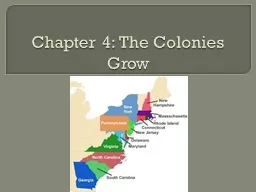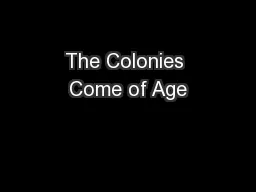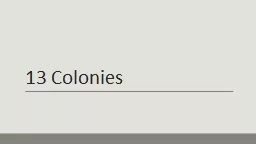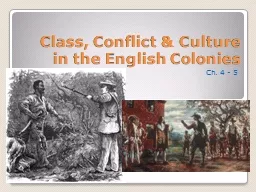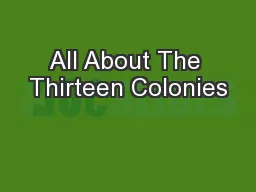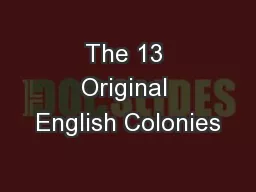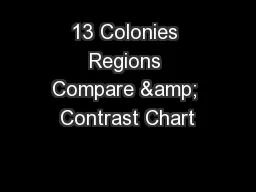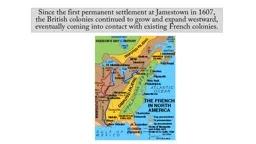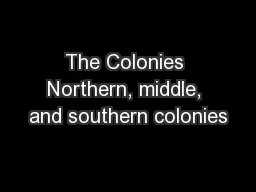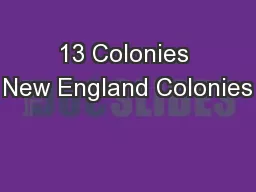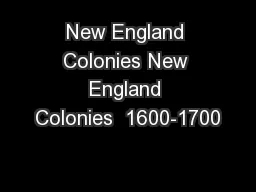PPT-Chapter 4: The Colonies Grow
Author : nephewhers | Published Date : 2020-06-26
Section 1 Life in the Colonies Colonial Immigration Population 1700 250000 Population 1770s 25 million Slave population 1700 28000 Slave population 1770s gt 500000
Presentation Embed Code
Download Presentation
Download Presentation The PPT/PDF document "Chapter 4: The Colonies Grow" is the property of its rightful owner. Permission is granted to download and print the materials on this website for personal, non-commercial use only, and to display it on your personal computer provided you do not modify the materials and that you retain all copyright notices contained in the materials. By downloading content from our website, you accept the terms of this agreement.
Chapter 4: The Colonies Grow: Transcript
Download Rules Of Document
"Chapter 4: The Colonies Grow"The content belongs to its owner. You may download and print it for personal use, without modification, and keep all copyright notices. By downloading, you agree to these terms.
Related Documents

